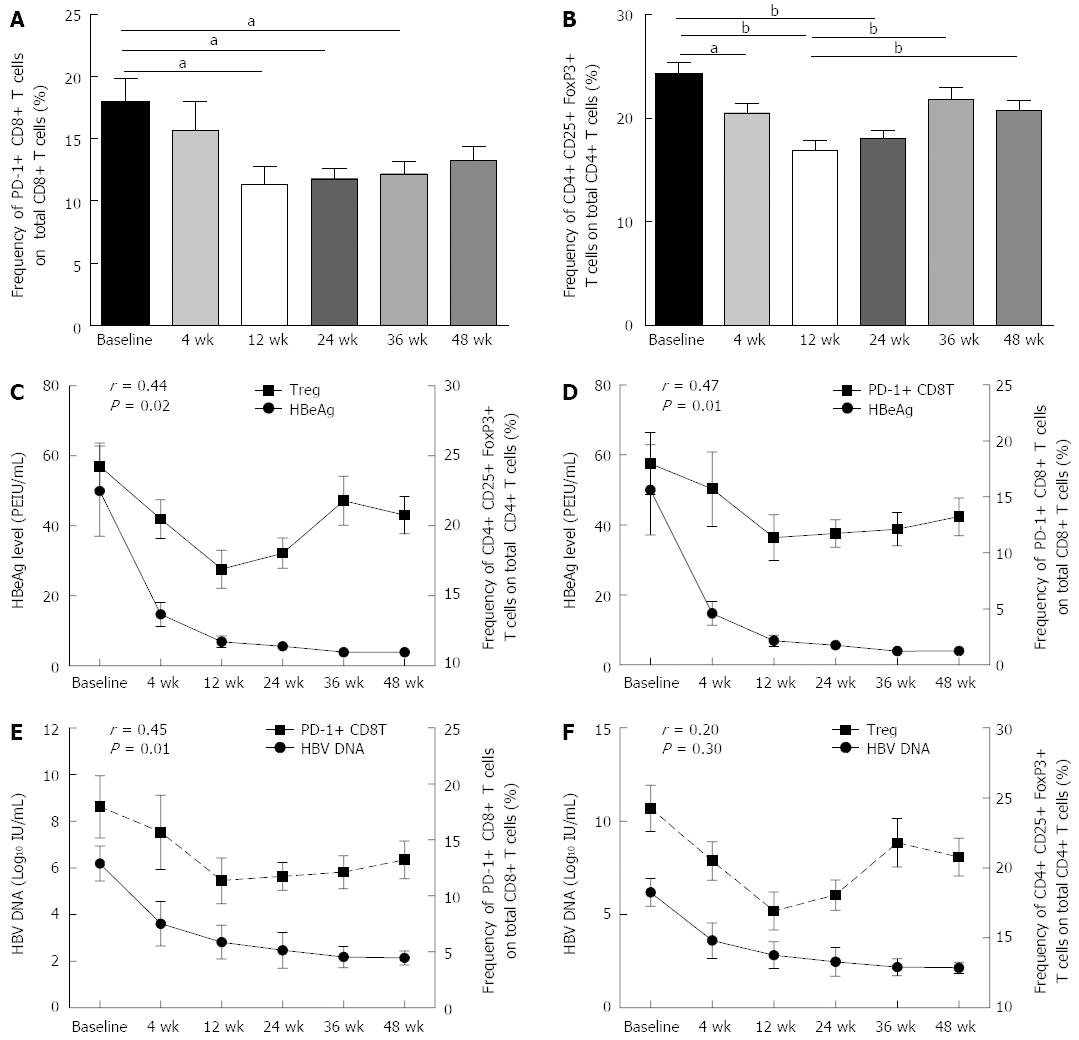Copyright
©2014 Baishideng Publishing Group Inc.
World J Gastroenterol. Jul 28, 2014; 20(28): 9486-9496
Published online Jul 28, 2014. doi: 10.3748/wjg.v20.i28.9486
Published online Jul 28, 2014. doi: 10.3748/wjg.v20.i28.9486
Figure 3 The relationship between the peripheral frequency of CD4+CD25+FoxP3+ T regulatory cells or programmed death 1 positive CD8 T cells and hepatitis B virus DNA or hepatitis B envelope antigen at different time points during therapy.
A: Peripheral frequency of programmed death 1 positive CD8 T (PD-1+ CD8 T) cells in all chronic hepatitis B (CHB) patients at different points during therapy; B: Peripheral frequency of T regulatory cell (Treg) in all CHB patients at different points during therapy; C: Relationship between the HBeAg level and the peripheral frequency of Treg cells in all CHB patients during therapy; D: Relationship between the HBeAg level and the peripheral frequency of PD-1+ CD8 T cells in all CHB patients during therapy; E: Relationship between the hepatitis B virus (HBV) DNA level and the peripheral frequency of PD-1+ CD8 T cells in all CHB patients during therapy; F: Relationship between the HBV DNA level and the peripheral frequency of Treg cells in all CHB patients during therapy. The X-axis shows the different time points during treatment, the left Y-axis shows the HBV DNA or HBeAg levels, and the right Y-axis shows the frequency of Treg cells or PD-1+ CD8 T cells. In the CHB patients, the HBeAg and HBV DNA levels start declining after treatment week 4, along with a decline in FoxP3+ Treg and PD-1+ CD8 T cells. aP < 0.05; bP < 0.01.
- Citation: Li CZ, Hu JJ, Xue JY, Yin W, Liu YY, Fan WH, Xu H, Liang XS. Viral infection parameters not nucleoside analogue itself correlates with host immunity in nucleoside analogue therapy for chronic hepatitis B. World J Gastroenterol 2014; 20(28): 9486-9496
- URL: https://www.wjgnet.com/1007-9327/full/v20/i28/9486.htm
- DOI: https://dx.doi.org/10.3748/wjg.v20.i28.9486









